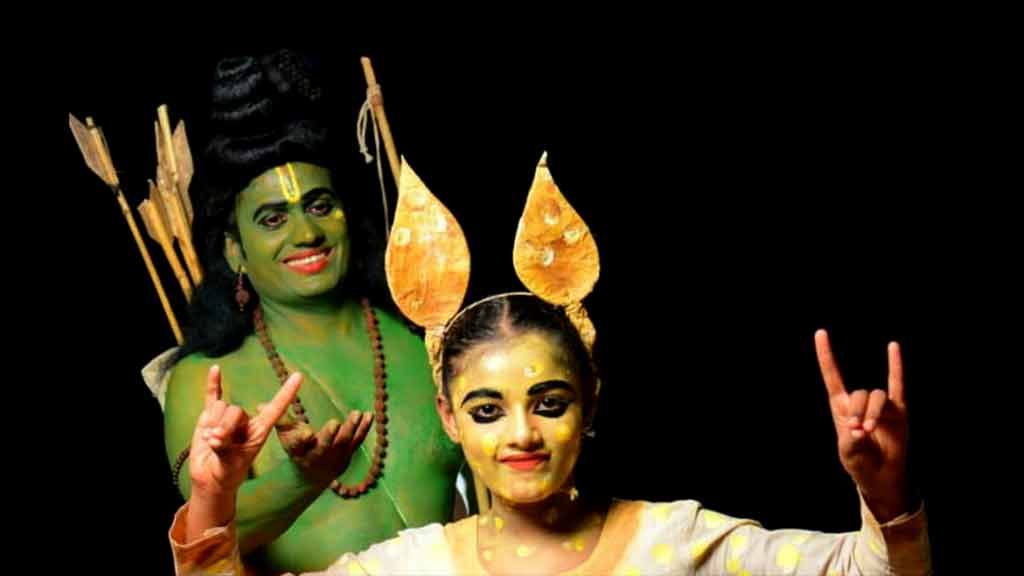Enchanting Kerala

Seethakali
The unique and flamboyant Seethakali is a centuries-old folk art form that is believed to have originated at Perinad in Kollam district. This art form was first performed some 150 years back by the people of Vedar and Pulayar communities.
Seethakali is based on certain episodes taken from the Indian epic Ramayana. Mythic characters such as Rama, Seetha, Ravana and Hanuman come alive in Seethakali performances that portray the tale of Seetha’s journey, from the time she accompanied Rama to the woods till her ascent to the heavens.
In the early times, Seethakali was performed as part of the harvest festival Onam. From Atham star till the 28th day after Onam, the performers who belong to the subaltern communities go from one house to another performing this art.
The props and instruments used during performances are all made of natural materials like bamboo and palm leaves. The costumes and the make-up are loud and eye-catching. The characters of Rama and Laxmana appear in green since the colour is used to represent gods and goddesses in Kathakali.
Seethakali are intriguing and fascinating at the same time, attracting attention with its vivid make-up, dynamic music, use of traditional instruments and spontaneous rhythmic movements. Performances are accompanied by beautiful folk songs that have been passed on orally from one generation to the next.
Currently, in Kerala, there is only one registered Seethakali performing group – Perinad Seethakali Sangham. In October 2018, the group was affiliated to the Kerala Folklore Akademi. The Akademi has played a crucial role in the revival of this once lost unique art form of Kerala.
In addition to the visual treats, Seethakali performances are both a means of re-discovering the artistic roots of God’s Own Country and a wonderful way of exhibiting her cultural opulence to the outside world.






